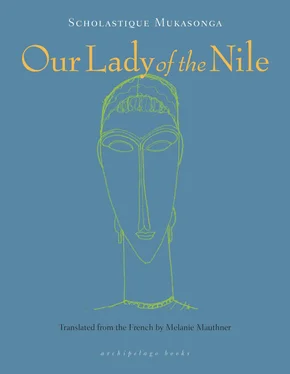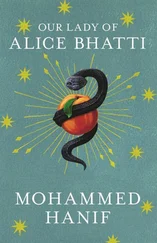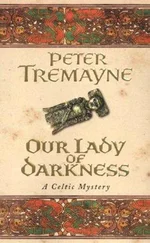Monsieur de Fontenaille laughed, threw his hands in the air, poured glass after glass of whiskey, and offered some to his guest, who refused more and more feebly until he eventually accepted. Virginia didn’t dare interrupt Father Pintard, but when she noticed the sun was close to setting, she whispered in Fontenaille’s ear:
“It’s late, I must get back to the lycée, I need a lift.”
“Please excuse me, Father,” Fontenaille interrupted. “Virginia must get back to the lycée. I’ll tell my driver to take her back. Now, Virginia, promise me you’ll return on Sunday: I want to see you as Queen Candace.”
“Young lady,” said Father Pintard, “think hard about what I’ve told you. You’ll find some consolation in my words for your people’s misfortune.”
“Tell me, Virginia, did you play the queen at Fontenaille’s?” asked Veronica.
“I did what I needed to do. But I also learned that Tutsi aren’t humans: here, we’re inyenzi , cockroaches, snakes, rodents; to whites, we’re the heroes of their legends.”
After the Easter break, Mother Superior wanted to show just how far her liberalism extended: she gave the girls permission to decorate the partitions of their “rooms.” With taste and moderation, she had insisted, and distributed drawings of Our Lady of the Nile that they could hang over their beds. Gloriosa checked to make sure that all the girls had placed the President’s photo next to Our Lady of the Nile. In Rwanda, all human activity took place beneath the curatorial portrait of the President. In even the most humble boutiques, the head of state’s dusty red portrait stood guard atop a shelf, flanked by a few bags of salt, some matches, and three cans of Nido milk; in even the sleaziest of bars, the portrait swung above jugs of banana beer and a lone crate of Primus bottles. The living rooms of the rich and powerful competed to have the largest, since the size of the President’s portrait testified to the businessman’s or civil servant’s unswerving loyalty to the Emancipator of the majority people. Unfortunate is the lady of the house who neglects to divest the beloved leader’s portrait of the tiniest speck of dust each morning.
Goretti was the only one who dared criticize the venerated photo: “I like our President very much,” she remarked, “but at least he could’ve dressed like a president for the photo, with a peaked cap, a smart uniform with epaulettes, loads of braid on the sleeves, and a heap of medals on his jacket. That’s what every president looks like, but ours looks like a seminary student in that dinky suit.” The girls around her pretended not to have heard. They awaited Gloriosa’s reaction. She took her time to retort, and surprised everyone with her moderation: “Our President doesn’t need a uniform to address the people, they all understand him, not like you and your colonel father.” Making fun of the way people spoke in the North, where they lived alongside gorillas at the foot of the volcanoes, was just part of the joking around that hardly shocked anyone. So nobody understood why Gloriosa hadn’t deployed her usual arsenal of threats, like denouncing remarks of her being subversive with regard to the Party and, even worse, her father … The most perceptive deduced that the military, particularly officers who came from the North, were clearly becoming quite influential, and that the President himself had to reckon with them. Goretti’s behavior suddenly seemed less awkward, and her language less rude. The girls refrained from the customary teasing and showered Goretti with signs of affection and solicitation, which she received with disdainful benevolence.
It proved to be quite difficult for the girls to decorate their alcove partitions as recommended by Mother Superior. They hung up some small basketwork panels decorated with traditional geometric motifs, place mats embroidered with simplistic flowers, photos of parents or entire families taken at an elder sister or brother’s wedding. But the girls weren’t satisfied with the result: this wasn’t how a young, modern girl, a “civilized” girl as they would say during the Colonial Era, should decorate her room. What was needed, and they knew it, were pictures of young people with long hair, singers wearing “anti-sun” shades, as they were called, blond girls, real blondes, blonder than Madame de Decker, long-blond-haired beach girls in bathing suits like the ones in the movies at the French Cultural Center. Of course there were no such pictures at the lycée of Our Lady of the Nile, except perhaps, said Immaculée, among the French teachers, who were young and single, most likely Monsieur Legrand, who had a beard and played the guitar. Gloriosa decided that Veronica should go ask Monsieur Legrand if he wouldn’t mind giving his pupils a few magazines: “You Tutsi girls know how to handle Whites, and for once it won’t be to bad-mouth the Republic.” Monsieur Legrand seemed flattered by Veronica’s request, and the following day he brought a pile of periodicals to class: issues of Paris Match and Salut les copains . “If you want more,” he added, “just drop by and ask me.” Some of the girls were convinced his invitation was meant specifically for them.
The girls flicked feverishly through the magazines. Lengthy negotiations ensued to decide the sharing and cutting out of photos. Johnny Hallyday, the Beatles, and Claude François were keenly fought over. As for the female stars, Françoise Hardy and her guitar seemed too sad, but Tina Turner and Miriam Makeba caught the girls’ fancy because of their color, but Nana Mouskouri had the most success thanks to her glasses. Everyone wanted Brigitte Bardot’s picture, but there weren’t enough to go around. Gloriosa divvied them up among her favorites. Only a handful of girls, out of either caution or actual devotion, insisted on the Pope’s portrait and some views of Lourdes, Saint Peter’s in Rome, or the Sacré-Cœur in Paris.
When Mother Superior proceeded to inspect the “rooms,” she couldn’t hold back a “ Mon Dieu !” of stupor, indignation, and anger.
“Just look at that!” she said to Father Herménégilde, who was standing beside her. “We thought we had protected our girls from the evils of the world, and the world has come crashing through our doors. But I can guess who gave them these horrors, and I’ll tell him quite bluntly what I think about this.”
“Satan,” the chaplain replied, “takes every available guise. I fear our Christian Rwanda may be under serious threat.”
Mother Superior severely reprimanded the girls and grounded them for the two following Sundays, except of course for those who had hung up a portrait of the Pope. She ordered the girls to tear down the indecent images and hand them in to Father Herménégilde. However, in order to demonstrate a certain liberalism, she exempted the photos of Adamo and Nana Mouskouri. The chaplain, it was noticed, conspicuously tore up the photos of the crooners but spared those of Brigitte Bardot and endeavored to furtively slip a few into his cassock pockets.
Mother Superior and Father Herménégilde apparently paid no attention to Godelive’s alcove. Yet her schoolmates were most intrigued by her decorative display. Apart from the obligatory icons of the Holy Virgin and the President, there was only one other image: a full-length portrait of the King and Queen of the Belgians, Baudouin and Fabiola. We also noticed that the royal portrait was not an illustration cut out of a magazine, but an actual photograph. When Godelive was asked why she’d chosen such a photo and how she’d obtained it, she got all mysterious, simply replying that she couldn’t say anything, that all would be revealed soon. Exasperated at not knowing, Gloriosa tried to force open Godelive’s suitcase while she was cleaning the chapel with a few other girls. But the padlocks withstood her attempts.
Читать дальше












